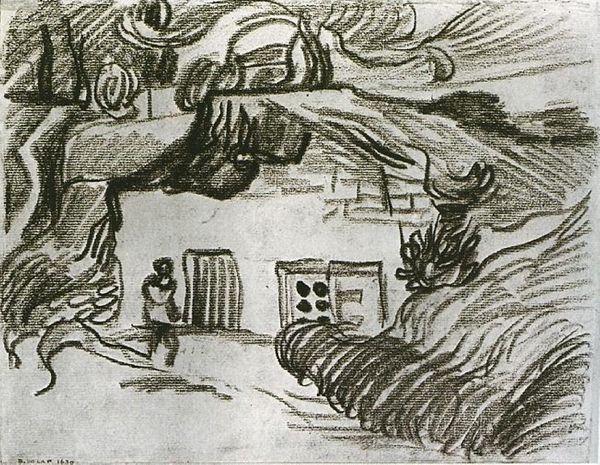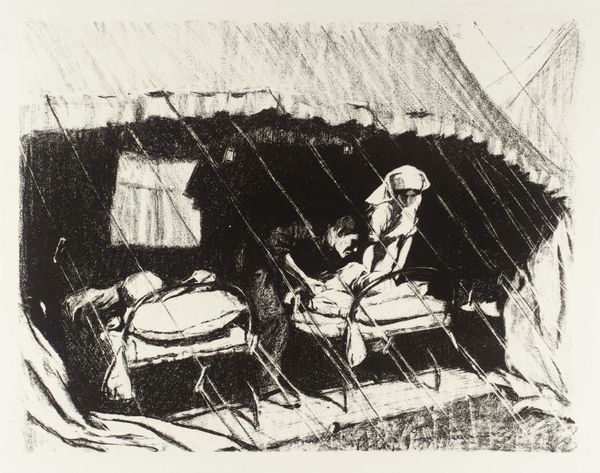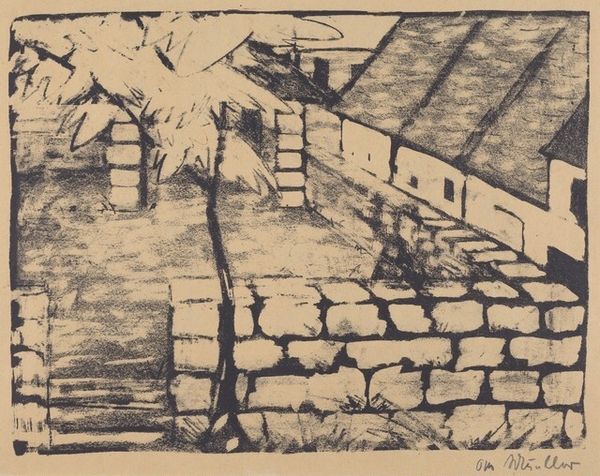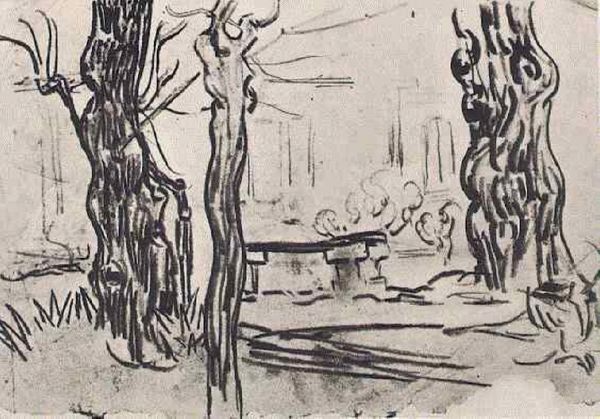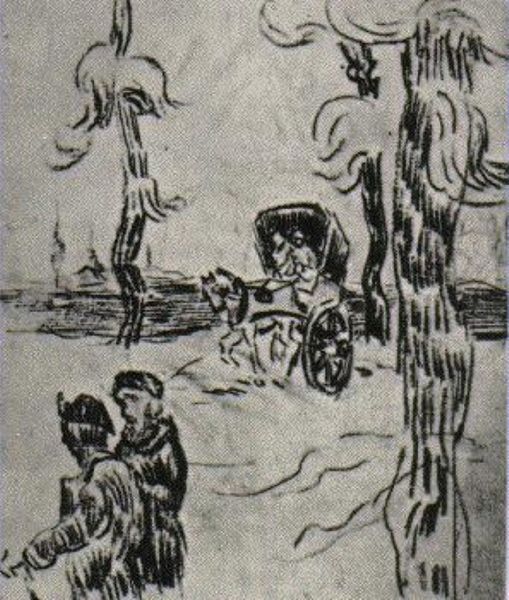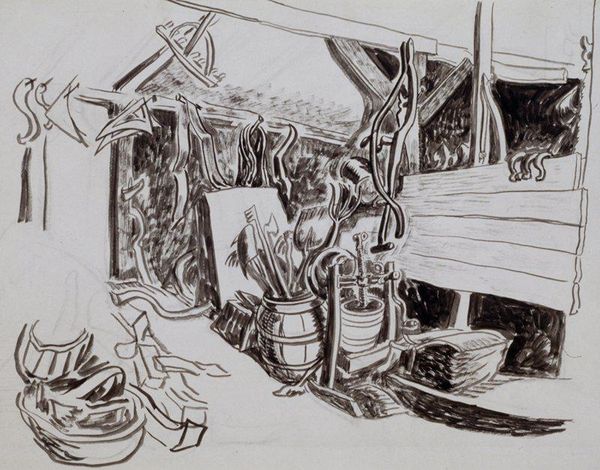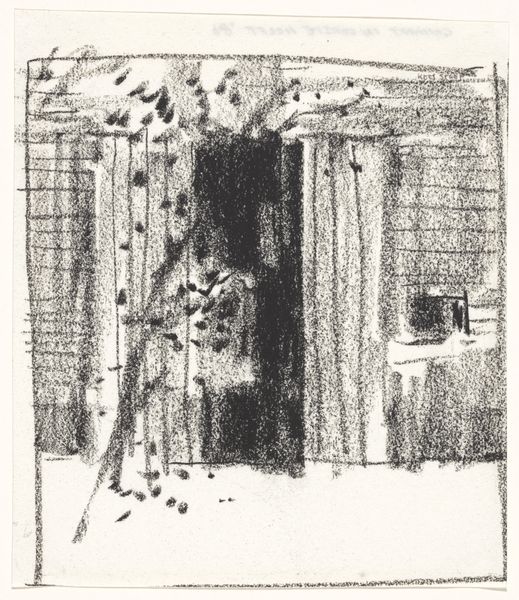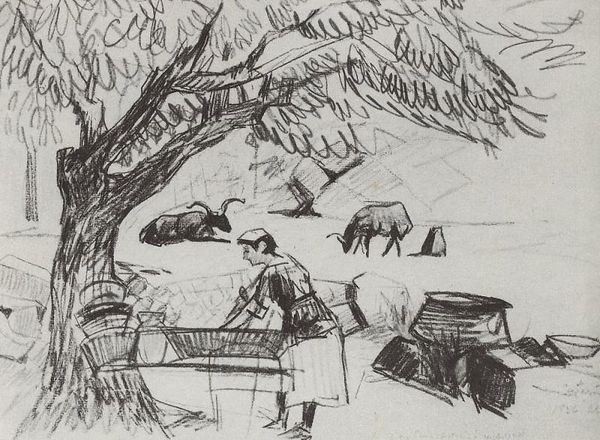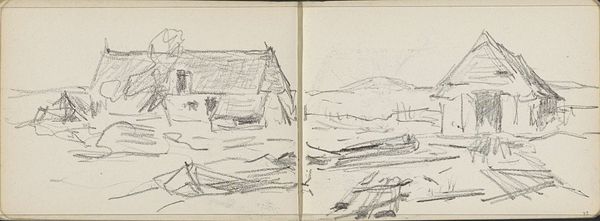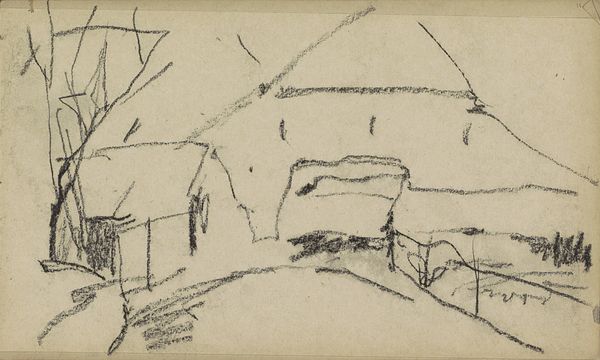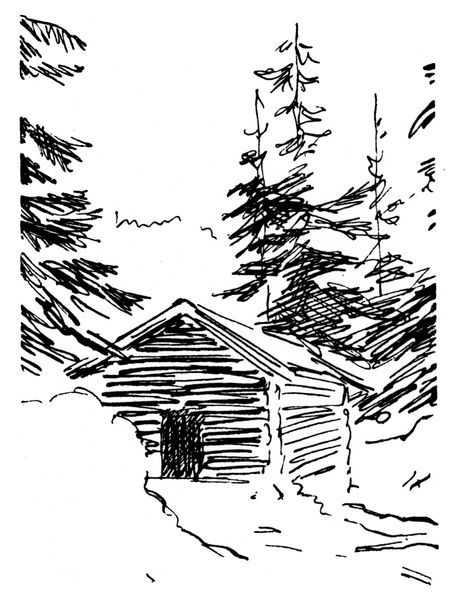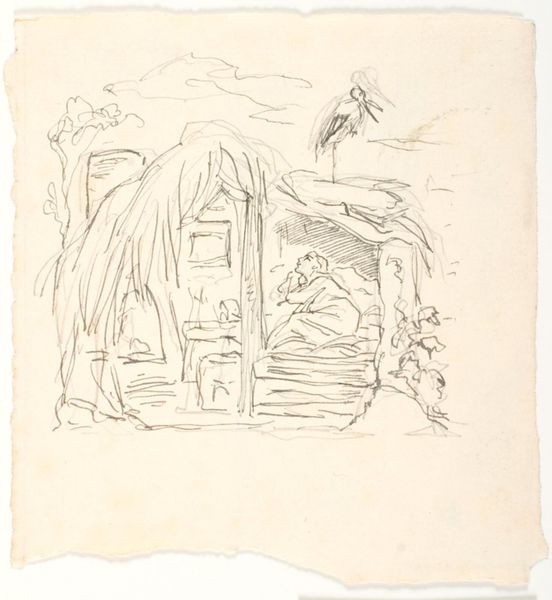
drawing, ink
#
drawing
#
landscape
#
ink line art
#
ink
#
expressionism
Copyright: Public domain
Curator: Today we're looking at Nicholas Roerich's ink drawing, "Oze's room," created in 1912. Editor: It has a distinctly unsettling, even nightmarish feel. The harsh lines and the stark contrast create a claustrophobic atmosphere. What can you tell us about it? Curator: Well, focusing on the materiality, the immediate observation is that this piece is crafted solely from ink on paper, what’s significant is how Roerich exploits the medium, how the consistency and layering techniques play to suggest an atmosphere heavy with shadow. You see the grid underneath, and the expressively simplistic shapes suggesting logs or planks, that imply some quickly abandoned project that becomes something expressive in itself. Editor: Absolutely. And beyond just the physical materials, it's the symbolism I find compelling. The dark, looming shapes—the suggestion of figures huddled around a fire—they hint at something ritualistic or clandestine. It is primitive life stripped bare. There's a very potent and unsettling dream-like quality to the subject. The room, if we can call it that, looks so transient. What are your thoughts about that? Curator: Right. The ink medium does convey temporality, but to delve deeper, one must explore the artist’s broader influences in relation to art production and consumption during that era. If this were made in an industrial landscape, it might seem like he were portraying the lives and labor conditions of factory workers or the materials consumed as fuel; yet here, within its domestic sphere, one must assess whether the fireplace can suggest domestic comforts or instead serve merely to show the availability of heat that sustains labor rather than life. The simplicity evokes a sense of place, the bare necessity to survive. Editor: It definitely lacks the comfortable hearth connotations. In his rendering, you feel no welcoming gesture from these objects. It is instead alienating, or just the setting for one’s alienation. Curator: Yes. Overall, it shows not comfort, but raw utility. The piece shows a clear relationship with not just materials and their significance but how these materials interact with one another. In doing so Roerich masterfully conveys both substance and social significance in something spare. Editor: It seems both bleak and intriguing, capturing a certain timeless essence of being and our struggle against it. Curator: Precisely. A unique glimpse into material reality represented using the most economical and expressive tool possible.
Comments
No comments
Be the first to comment and join the conversation on the ultimate creative platform.
